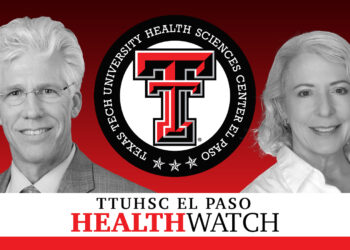 BBC
BBCMakeup and skincare ingredients should be listed in English and not Latin to protect people with allergies, campaigners say.
Cosmetic companies display ingredients in Latin, or using scientific names. But MP Becky Gittins, who has a severe nut allergy, said this was a problem as “less than 5% of our young people are educated in Latin”.
One mum, whose daughter had an allergic reaction to body wash, said cosmetics should be labelled in the same way as food.
Makeup influencer Amy Loring said the labelling system was “frustrating” but for some could be “life threatening”.
The Cosmetic, Toiletry and Perfumery Association (CTPA) said Latin-based names provided a universal language across the globe.
Cosmetic companies list ingredients according to the International Nomenclature of Cosmetic Ingredients (INCI), a system which includes thousands of different Latin-based names.
For example, sweet almond oil is Prunus Amygdalus Dulcis, peanut oil is Arachis Hypogaea, and wheat germ extract is Triticum Vulgare.
Some cosmetic brands also list their ingredients in English, but this is not a requirement.

Eve Huang’s daughter Elysia, 9, is allergic to cow’s milk, coconut, eggs, asparagus, mustard and tree nuts.
Elysia’s allergies are triggered not just by food but by airborne particles and skin contact.
“The Latin puts allergy sufferers at risk and it is so frustrating,” said Ms Huang, from Hornchurch in Essex.
“Why are allergens not listed in bold? Why are there no warning signs?”
Ms Huang said she recently bought Elysia a new skin-sensitive body wash. Within seconds of getting into the bath, Elysia became red and developed a hives rash all over her body.
At first, they did not realise the cause was the body wash.
Elysia did not develop anaphylaxis – a severe and life-threatening allergic reaction – but she did need to be treated.
‘Google the Latin names’
“A child should not have to take medicine simply for having a bath. A process of getting oneself clean should not make them seriously ill,” said Ms Huang.
She said birthday parties could also be “a nightmare”.
“At one party, Elysia was gifted a facial mask in the party bag and I’ve had to explain she can’t use it until I’ve ‘Googled’ the Latin names and checked whether it’s safe.”
She added: “Some brands now include English translations, which is useful. But I would like to see similar, if not the same standards, as food packaging.”

Gittins, the Labour MP for Clwyd East who is behind the campaign for change, has a severe nut allergy. If she were to use products containing nuts it could trigger anaphylaxis.
Gittins said at a recent trip to a spa, she had to frantically “Google” Latin terms to check for allergens.
“Even on a day that’s supposed to be relaxing, I was still mitigating risk. It is incredibly difficult,” she said.
“Less than 5% of our young people are educated in Latin at any level. Even fewer would recognise these terms when checking the back of a packet to see if they can use certain toiletries or ointments – that then becomes a big problem.”
Gittins said her allergy meant she lived with “a base level of anxiety”.
She added: “Do I live a very restricted life, or do I go out and do the things that are more risky?
“That is what we need to minimise – we need to make sure we have a much more allergy-friendly world so we can mitigate that risk.”

Amy Loring, a makeup artist from Cardiff who uses her Instagram page to provide skincare and cosmetics advice to thousands, said the labelling system needed to be “very clear”.
“I have hypersensitive skin and it’s very uncomfortable when you’re breaking out and have eczema over your face. There are some days I can’t put anything on my skin because it is reacting so bad,” said the 31-year-old.
“It is frustrating as a consumer when you get reactions like rosacea, redness, breakouts, and that’s just mild allergies – it can be quite severe and life-threatening.”
The Latin names of cosmetic ingredients
- Almond (bitter): Prunus amygdalus amar
- Avocado: Persea gratissima
- Apricot: Prunus armeniaca
- Banana: Musa sapientum
- Brazil nut: Bertholletia excelsa
- Cashew: Anacardium occidentale
- Chestnut: Castanea sativa/sylva or castanea crenata
- Coconut: Cocus nucifera
- Egg: Ovum
- Fish liver oil: Piscum iecur
- Hazelnut: Corylus rostrata, corylus americana, corylus avellana
- Kiwi fruit: Actinidia chinensis or actinidia deliciosa
- Oat: Avena sativa or Avena strigosa
- Peach: Prunus persica
- Peanut oil: Arachis Hypogaea
- Sesame: Sesamum indicum
- Sweet almond oil: Prunus amygdalus dulcis
- Walnut: Juglans regia or juglans nigra
- Wheat germ extract: Triticum vulgare
Regulations state that cosmetic ingredients must be listed clearly. If there is no outer packaging, the labelling will be on the container. If the product is very small, the ingredients may be listed on a leaflet.
While the INCI system ensures consistency across the globe, critics say it leaves many consumers in the dark.
 Rachel Williams
Rachel WilliamsRachel Williams’ son, Jacob, is allergic to peanuts, hazelnuts and almonds.
“It is difficult enough to navigate life with allergies without adding the learning of Latin on top of everything else,” said Rachel, from Swansea.
“I can’t always remember the name of certain nuts in Latin, or I doubt myself when I’m checking products. This means I have to search online every time I use a product. I would have a lot more confidence in the products if they stated all of the top 14 allergens in English.”
The CTPA has defended the use of INCI ingredient names.
Caroline Rainsford, the director of science at the CTPA, said the system provided a universal language across the globe.
“For botanical or natural extracts, we refer to the Linnaean system, which is the international system for scientifically naming plants and animals, and lots of those names will be Latin-based,” she said.
“The reason we refer to that system is to have global harmonisation.
“I can see that perhaps people would think it may be easier to have the English name but if you are on holiday and you are looking at the ingredients list, you would need to know the name of the plant in whichever country you’re in.
“Whereas if we use the INCI system, you then just need to remember that one INCI name.
“The more consistency and harmonisation we have with the ingredient list is not only great for us when we’re buying a product, it also makes life easier for companies.”
The industry has developed tools to help consumers navigate the terminology.
One such tool is the COSMILE app, which allows users to search ingredient names by scanning the label.
The app aims to offer reliable and scientifically supported information on thousands of ingredients used in cosmetic products.
A UK government spokesperson said: “Our regulations require all cosmetics to include a full list of ingredients that is clearly marked on the product label or packaging using generally accepted names.”
Source link : https://www.bbc.com/news/articles/c9w17qz4ldzo
Author :
Publish date : 2025-07-12 20:59:00
Copyright for syndicated content belongs to the linked Source.















